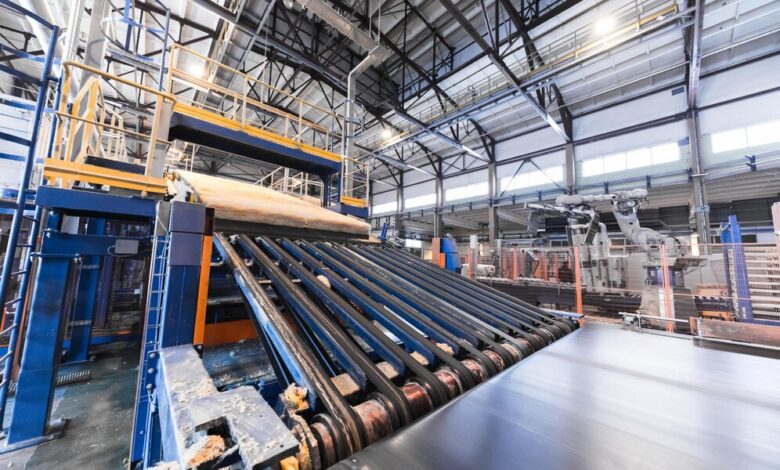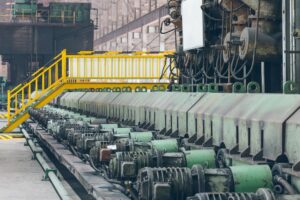Maximizing Efficiency with Cold-Resistant Conveyor Belts in Bulk Material Transportation

In the realm of bulk material transportation, efficiency is paramount. The seamless flow of goods across various industries heavily relies on the reliability and performance of conveyor belts.
However, in cold climates, traditional conveyor belts face significant challenges, leading to inefficiencies and increased maintenance costs.
This article explores the importance of cold-resistant conveyor belts in maximizing efficiency for bulk material transportation, delving into their features, applications, and the benefits they bring to industries operating in cold environments.
Understanding Cold-Resistant Conveyor Belts
Cold-resistant conveyor belts are essential for efficient bulk material transportation in cold environments.
Understanding their properties, such as low-temperature flexibility and durability, ensures maximum efficiency in operations subject to extreme cold conditions.
1. Material Composition
Cold-resistant conveyor belts are specifically designed to withstand extreme cold temperatures while maintaining their structural integrity and flexibility.
These belts typically consist of a rubber compound that includes additives to enhance their cold-resistant properties.
The material composition is crucial in ensuring the belt’s ability to withstand freezing temperatures without compromising performance.
2. Layered Construction
The construction of cold-resistant conveyor belts involves multiple layers, each serving a specific purpose. These layers often include a carcass for strength, a cover for protection against external factors, and special additives to enhance cold resistance.
Understanding the layered construction is vital for selecting the right conveyor belt based on the specific requirements of the application and the severity of the cold environment.
Applications of Cold-Resistant Conveyor Belts
Cold-resistant conveyor belts are essential for industries dealing with bulk material transportation in cold environments.
These belts are vital in sectors such as mining, agriculture, and construction to ensure seamless operations and prevent downtimes caused by belt failures due to extreme temperatures.
1. Mining Industry
In cold climates, mining operations face unique challenges, including the need to transport bulk materials efficiently in freezing conditions.
Cold-resistant conveyor belts find extensive use in mining applications, where they ensure a reliable and continuous flow of materials, even in the harshest winter environments.
This application not only enhances operational efficiency but also reduces downtime associated with conveyor belt failures.
2. Agricultural Sector
Cold-resistant conveyor belts play a crucial role in the agricultural sector, especially in regions where cold weather persists for a significant portion of the year.
Farmers and agribusinesses rely on conveyor systems to transport bulk quantities of crops and produce.
Cold-resistant belts enable smooth and efficient material handling, contributing to increased productivity in cold climates.
Benefits of Cold-Resistant Conveyor Belts
Cold-resistant conveyor belts offer numerous benefits in bulk material transportation operations. These belts are designed to withstand extreme temperatures, ensuring smooth and reliable operation in cold environments.
1. Extended Service Life
One of the primary benefits of using cold-resistant conveyor belts is their extended service life in low-temperature environments.
These belts are designed to withstand the harsh conditions of cold climates, including freezing temperatures and icy conditions, without experiencing premature wear and tear. This longevity results in reduced downtime and maintenance costs.
2. Improved Material Flow
The flexibility and resilience of cold-resistant conveyor belts ensure a consistent and improved material flow, even in sub-zero temperatures.
This is particularly critical in industries where uninterrupted material transportation is essential for maintaining production schedules. By preventing material blockages and reducing the risk of belt damage, these belts contribute to a smoother workflow.

Selecting the Right Cold-Resistant Conveyor Belt
When it comes to maximizing efficiency in bulk material transportation, selecting the right cold-resistant conveyor belt is crucial.
These belts are specially designed to withstand low temperatures and harsh conditions, ensuring smooth operation and minimized downtime.
Cold-resistant conveyor belts offer numerous benefits in bulk material transportation operations. These belts are designed to withstand extreme temperatures, ensuring smooth and reliable operation in cold environments.
Cold resistant conveyor belts offer numerous benefits in bulk material transportation operations. Cold resistant conveyor belts are designed to withstand extreme temperatures, ensuring smooth and reliable operation in cold environments.
1. Temperature Ratings
Not all cold-resistant conveyor belts are created equal, and selecting the right one depends on the specific temperature conditions of the operating environment.
Understanding temperature ratings is crucial in choosing a belt that can withstand the lowest temperatures expected in a particular region.
Manufacturers provide temperature specifications for their belts, helping industries make informed decisions based on their needs.
2. Material Compatibility
Different materials require specific handling considerations, and this holds true in cold environments. When selecting a cold-resistant conveyor belt, it’s essential to consider the types of materials it will be transporting.
Some materials may react differently to cold temperatures, impacting the belt’s performance. Ensuring compatibility between the belt material and transported goods is essential for long-term efficiency.
Maintenance and Care Practices
Maintenance and care practices are crucial for maximizing efficiency when using cold-resistant conveyor belts in bulk material transportation.
Regular inspections, cleaning, and lubrication help extend the lifespan of the belts and ensure smooth operation.
1. Regular Inspections
To maximize the efficiency of cold-resistant conveyor belts, regular inspections are imperative. Cold weather conditions can exacerbate wear and tear, making it crucial to identify potential issues early on.
Inspections should cover the entire length of the conveyor system, focusing on areas prone to cold-related damage, such as joints and transition points.
2. Proactive Maintenance Strategies
Implementing proactive maintenance strategies is key to preventing unexpected downtime and reducing overall maintenance costs. This includes scheduled belt replacements, lubrication of moving parts, and monitoring the conveyor system’s performance.
Proactive maintenance helps identify and address potential issues before they escalate, ensuring a continuous and efficient material transportation process.
Conclusion
The utilization of cold-resistant conveyor belts is a critical factor in maximizing efficiency for bulk material transportation in cold environments.
From mining operations to agricultural settings, these belts offer extended service life, improved material flow, and enhanced reliability in freezing conditions.
Selecting the right cold-resistant conveyor belt, understanding its construction and applications, and implementing proactive maintenance practices are essential steps for industries looking to optimize their material handling processes in cold climates.



